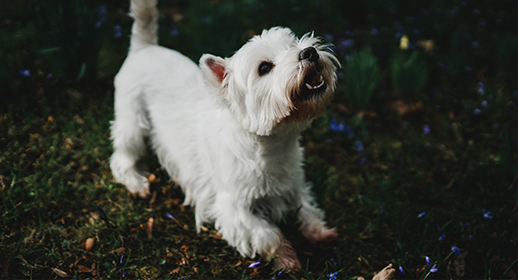

Photo by dole77 on Unsplash
As a proud dog parent, you’ll know that your furry friend communicates in many ways. By reading their body language, you can understand how they’re feeling or what they’re trying to tell you. From the way they wag their tail to the position of their ears, every expression and movement has a meaning.
The importance of understanding your dog
Our furry companions use their bodies to communicate all sorts of emotions, including happiness, excitement, anxiety and discomfort. You may even be able to use their body language to spot if your dog is depressed or not feeling well. By understanding your pup’s body language, you can build a stronger bond with them, and give them the love, support, care, or space they need at any given time.
Posture
Just like humans, a dog’s posture can indicate a range of emotions, as well as how they’re responding to certain situations. If your pooch is feeling anxious or stressed, they may hunch their shoulders, tuck their tail and lower their head. This suggests that they’re feeling vulnerable, so a little comfort and reassurance from you might help. On the other hand, when a dog is feeling confident and assertive, they may stand tall with their ears and tail straight up and their chest puffed out. Dog’s often use this posture when they’re aroused by their surroundings or trying to protect their territory.
Tail wagging
It’s pretty common to see a dog wagging their tail, and although it’s commonly believed to be a sign of happiness, this isn’t always the case. Happy wags are typically low and wide, often involving movement of the whole body. The tail motion is generally soft and loose, rather than stiff. Generally, the direction and speed of the wag, and position of their tail, can help you identify how your pooch is feeling. For a holistic understanding, you will also need to pay attention to the context of the situation and their other body language;
- Wagging to the right: They are feeling positive emotions, such as happiness or excitement.
- Wagging to the left: They may be feeling anxious or uncertain.
- A slower wag: They’re feeling unsure or cautious.
- A fast and vigorous wag: They’re experiencing extreme excitement or high arousal.
- Tail is high up and stiff: They’re feeling alert or dominant.
- Tail is low, relaxed and somewhat between their legs: Signifies submission, fear, or uncertainty.
Facial expressions
Our furry friends also communicate their mood through their facial expressions. When they’re happy, their faces look relaxed, perhaps even with an open mouth and their tongue hanging out. When dogs are stressed or scared, they may show their teeth, squint their eyes, or raise their eyebrows. Reading these sorts of facial cues can help you recognise when they're uncomfortable or afraid and take steps to address their anxiety.
Eyes
They say eyes are the windows to the soul, and your pup’s eyes can certainly tell you a lot about how they’re feeling. For example, when your pooch is comfortable and content, their eyes may look bright and round, or their gaze may look relaxed. On the other hand, when they're feeling threatened or nervous, their eyes may look extra wide or they might squint. Eye contact is complex and can mean different things based on the context. While prolonged eye contact can signal aggression or dominance, a relaxed gaze can mean your pup feels relaxed and trusts you. If your dog avoids eye contact altogether, it can be a sign of fear or submission.
Raised hackles
Another important body language signal to understand is raised hackles – which is when your dog’s hair raises on their back, tail and/or neck. Be sure to observe their other body language and the environment to pinpoint what the raised hackles might mean. For example, if your dog has their hackles up while playing with their favourite toy, it's likely they're excited and eager to play. But if your dog is in a new, unfamiliar environment, raised hackles could mean they’re feeling anxious.
Putting it all together
It’s important to remember that all of these body language signals can mean different things depending on your dog's personality, breed, age, past experiences and the current context. It’s always best to look at more than one aspect of your pooch’s body language at the same time to build a fuller picture of their current emotional state. Understanding your dog’s body language takes time and effort, but it's really important for building a strong, healthy relationship with them. By observing your pup’s behaviour over time, you’ll get to know what each signal means, so you can respond in the most effective way possible. Your furry companion relies on you to provide them with the love, care, and attention they deserve, so make sure you're up to the task by learning their language. For more tips on how to keep your dog happy and healthy, check out our blog.
© 2023 Mars or Affiliates.
Buy online
Click to buy from any of the retailers below





